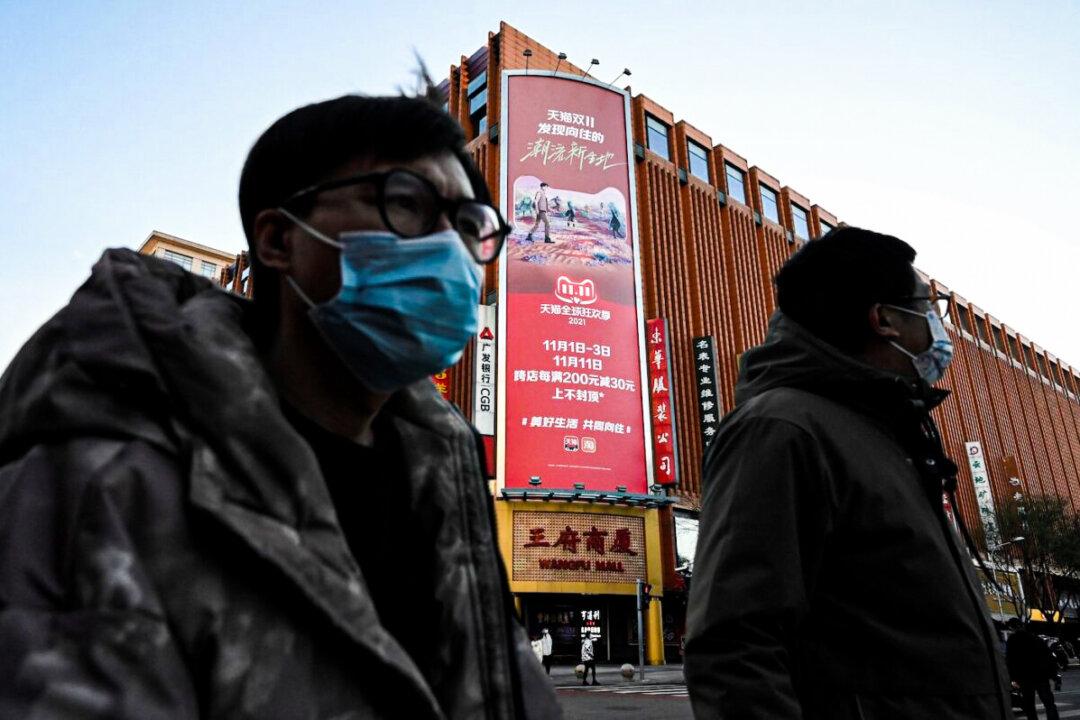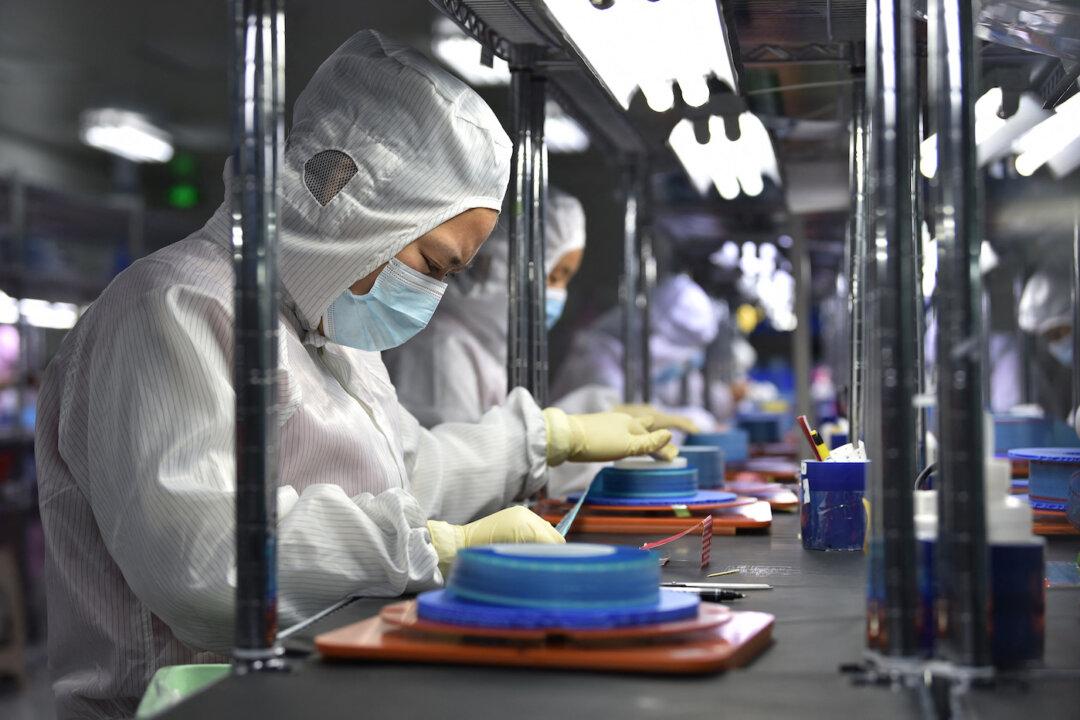China’s economy is slowing down—on this fact the data is clear. But the many enormous obstacles China faces in building a healthy economy are not always as easy to understand. A prominent Chinese economist, based in the United States, has identified six areas that could bring growth to a grinding halt. Speaking at a forum in Vancouver organized by Shenglin Financial Inc. on May 3, economist He Qinglian said there are six major “bottlenecks”—having just three in a democratic country would see a party ousted, she said—that could have a profound impact on China’s future if left unresolved. The following is an edited and condensed version of her remarks.
Losing ‘World’s Factory’ Status
What goes up must come down: China’s booming manufacturing sector, which powered through from 2001 to 2010 at a huge cost to the nation’s ecology and people, is in irretrievable decline.
Dongguan City, an important industrial city in China’s southern province of Guangdong, is experiencing a second wave of business collapse—at least 4,000 businesses shuttered last year. From 2008 to 2012, public data showed that 72,000 corporations closed down.
Then three carriages that pulled Chinese economic growth—investment, foreign trade, and domestic demand—have already died, as seen from the 15 percent fall of year-on-year foreign trade growth for the first quarter this year.
Real estate has driven China’s economic growth for the past 20 years. The communist regime and businesses have worked together to stop the housing market from crashing, but several dozen industries upstream and downstream of the real estate industry have all fallen into production overcapacity since 2013. Production is a “nuclear threat” to China’s economy and could lead to an economic crisis at any time.
These problems indicate restructuring China’s economy is hopeless. The so-called economic structural adjustment is not something that can be put in place as the government wishes. As early as 2005, Guangdong Province had begun replacing labor-intensive industries with technology-intensive high-tech industry. The result is a hollowed-out industry in the Pearl River Delta.
Huge Unemployed Population
The official unemployment rate of less than 4.5 percent of China’s working population is inaccurate, because the figure only includes people registered with the local government while excluding unemployed farmers, who form a sizable part of the labor force.
In China today, the unemployed can be divided into four groups: Surplus agricultural labor owing to reverse migration when factories close; white-collar urban workers who lost their jobs with the withdrawal of foreign capital; college dropouts; and middle and high schoolers who discontinue their studies.
Former Chinese Premier Wen Jiabao estimated that the population of unemployed stood at 200 million in March 2010. At the World Economic Forum in Davos this March, former senior vice president of the World Bank Justin Lin said 124 million Chinese workers in manufacturing are expected to relocate to other developing countries to seek higher wages.
With China’s current working population of 940 million, once there are 300 million unemployed, the real unemployment rate is equivalent to 32 percent—seven times the official projection.
Crisis of Resources
China’s economic development left polluted waters, land, and air in its wake—something that will return to haunt China’s future economic growth and increase dependence on foreign resources.
Not that China isn’t relying on external resources to drive its economy—China imports more than 60 percent of its oil, and relies heavily on imports of iron, copper, zinc, and other metal ore.
China’s food sufficiency stands at 87 percent—staples like soybeans, corn, and wheat are imported. To put China’s food issues in perspective, nearly 200 million people will rely on food imports.
Any fluctuation in China’s grain prices will affect international market prices, and any natural disaster or war in a grain-producing country will reduce the supply and cause Chinese grain prices to go up.
Not that the Chinese communist regime hasn’t been given prior warning about its food problems: In his book, “Who Will Feed China,” environmental analyst Lester Brown warned the Chinese regime 20 years ago that it would face food scarcity. But the Chinese regime said the report was a conspiracy of “anti-China forces.”
Spiraling Local Government Debt
Consultancy firm McKinsey & Company announced on May 8 that China’s total debt stands at 282 percent of its Gross Domestic Product (GDP). Most of this debt is made up of government and corporate debt—individual debt accounts for only a tiny portion of it.
Local governments owed the most, with an estimated debt value of about 20 trillion.
Debt in China has been constantly underreported—while National Development and Reform Commission official Li Tie acknowledged that the official figure of 18 trillion is less than half the actual debt, investigations revealed that most local governments only reported between 10 to 30 percent of actual debt, meaning that the true figure is significantly higher.
Potential Financial Crisis
Debts, rising default rates, and a huge surplus in liquidity caused by central bank policies could all lead to a financial crisis.
China is currently experiencing its third peak of bad loans caused by real estate. The first was during the Zhu Rongji era when a $170 billion debt took as long as six years to clean up. The second crisis was in the mid-2000s, and was mitigated by foreign banks. But Chinese economic growth has been fueled by a constant supply of freshly printed currency over the years, and with a massive increase in the money supply, excess liquidity could start to become a major problem. This has been highlighted in recent months with the bull market, caused by the stock market being used as a reservoir for excess capital—a necessarily unsustainable policy.
Income Disparity
Inequality in China has reached epic proportions over the last 20 years due to reckless corporatist behavior by the regime and business. The China Social Science Research Center of Peking University released a 2014 study, which showed that China’s Gini coefficient had reached 0.73 in 2012—meaning that the top 1 percent of Chinese households had more than one-third of the national wealth, while the bottom 25 percent of households had only 1 percent of national assets.
Nearly 60 percent of Chinese people are poor, a state of affairs ripe for destabilizing social unrest.





